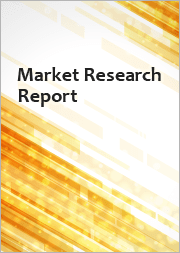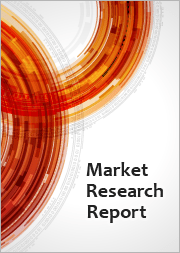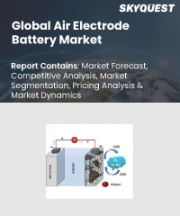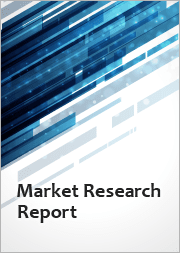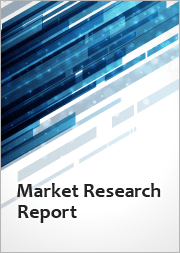
|
시장보고서
상품코드
1569783
세계의 IoT 배터리 시장 전망(-2030년) : 배터리 유형별, 충전 유형별, 용량별, 기술별, 용도별, 최종사용자별, 지역별 분석IoT Battery Market Forecasts to 2030 - Global Analysis By Battery Type, Charging Type, Capacity, Technology, Application, End User and By Geography |
||||||
Stratistics MRC에 따르면, 세계 IoT 배터리 시장은 2024년 117억 달러 규모이며, 예측 기간 동안 11.8%의 연평균 복합 성장률(CAGR)로 성장하여 2030년에는 229억 달러에 달할 것으로 예상됩니다.
IoT 배터리는 사물인터넷(IoT) 기기를 위해 특별히 설계된 전원 공급 장치로, 소형, 저전력 소비, 긴 수명의 에너지 솔루션이 필요한 경우가 많습니다. 이 배터리는 스마트 홈 기기에서 산업용 센서에 이르기까지 다양한 용도에서 무선 통신 및 데이터 전송을 가능하게 합니다. 배터리는 에너지 효율에 최적화되어 있으며, 성능을 유지하면서 작동 수명을 연장하기 위해 리튬 이온 및 리튬 폴리머와 같은 첨단 기술을 사용하는 경우가 많으며, IoT의 성장과 함께 신뢰할 수 있고 내구성이 뛰어난 배터리 솔루션에 대한 수요는 계속 증가하고 있습니다.
IoT 기기 도입 확대
IoT 디바이스의 채택 확대가 시장을 주도하고 있습니다. 이러한 장치들은 효율적이고 수명이 긴 전원 솔루션을 필요로 하기 때문입니다. 용도이 증가함에 따라, 더 긴 작동 수명과 신뢰할 수 있는 성능을 지원하는 배터리에 대한 수요가 급증하고 있습니다. 에너지 밀도 향상 및 급속 충전 기능 등 배터리 기술 혁신은 이러한 요구를 충족시키는 데 매우 중요합니다. 이러한 추세는 확장되는 IoT 생태계를 효과적으로 지원할 수 있는 배터리 개발의 중요성을 강조하고 있습니다.
제한된 배터리 수명
시장에서 배터리 수명이 짧다는 것은 IoT 기기의 신뢰성과 효율성을 저해하는 심각한 문제입니다. 배터리 수명이 짧으면 잦은 유지보수, 운영 비용 증가, 잠재적인 기기 고장, 데이터 유출 및 통신 중단으로 이어질 수 있습니다. 또한, 지속적으로 충전하거나 배터리를 교체해야 하는 디바이스는 사용자 채택을 저해하고 IoT 솔루션의 전반적인 효율성을 떨어뜨릴 수 있습니다. 또한, 이러한 제한은 제조업체가 강력한 에너지 관리 시스템이 없는 기기를 출시하는 것을 꺼려할 수 있기 때문에 혁신을 저해할 수 있습니다.
장치의 소형화
IoT 용도는 다양한 환경에 대응하기 위해 더 작고 컴팩트한 디바이스를 요구하기 때문에 배터리도 성능 저하 없이 소형화해야 합니다. 이를 위해 마이크로 배터리, 에너지 밀도가 높은 리튬 이온 셀 등 제한된 공간에서 안정적인 전력을 공급할 수 있는 첨단 배터리 기술이 개발되고 있습니다. 소형화에 초점을 맞추는 것은 IoT 기기의 미적 감각과 기능성을 향상시킬 뿐만 아니라 일상 생활에 대한 원활한 통합에 대한 수요 증가에 대응하고 있습니다.
에너지 밀도의 한계
시장에서 에너지 밀도의 한계는 기기의 성능과 수명에 심각한 영향을 미칠 수 있습니다. 에너지 밀도가 낮으면 저장할 수 있는 전력량이 제한되어 작동 수명이 짧아지고 충전 및 교체 빈도가 높아집니다. 이는 유지보수 비용 증가와 사용자 불만족으로 이어져 결국 IoT 솔루션의 채택을 저해할 수 있습니다. 또한, 에너지 밀도가 낮은 디바이스는 고급 기능 및 기능을 지원하지 못하여 그 효과를 제한할 수 있습니다.
COVID-19의 영향 :
코로나19는 시장에 큰 영향을 미쳐 원격 모니터링 및 자동화 솔루션에 대한 수요를 가속화했습니다. 기업과 소비자가 건강, 안전, 효율성을 위해 IoT 기기에 대한 의존도가 높아지면서 신뢰할 수 있는 배터리 기술에 대한 요구가 급증했습니다. 이러한 도전에도 불구하고, 팬데믹은 에너지 효율이 높은 배터리 솔루션의 혁신을 촉발시켰고, 업계는 회복력을 높이고 빠르게 변화하는 디지털 연결 환경에 적응하기 위해 노력했습니다.
예측 기간 동안 재래식 부문이 가장 큰 비중을 차지할 것으로 예상됩니다.
예측 기간 동안 재래식 부문이 가장 큰 시장 점유율을 차지할 것으로 예상됩니다. 이러한 기존 배터리는 리튬이온과 같은 신기술에 비해 에너지 밀도, 무게, 환경 영향 면에서 부족한 경우가 많으며, IoT 기기가 발전하고 더 작고 효율적인 전원 공급이 요구됨에 따라 기존 배터리는 적응에 대한 압박을 받고 있습니다. 이러한 변화는 최신 IoT 용도 증가하는 요구 사항을 충족하는 보다 진보된 솔루션을 위한 기술 혁신을 촉진할 것입니다.
예측 기간 동안 농업 분야가 가장 높은 CAGR을 나타낼 것으로 예상됩니다.
농업 분야는 예측 기간 동안 가장 높은 CAGR을 나타낼 것으로 예상됩니다. 토양 센서 및 자동 관개 시스템과 같은 IoT 장치는 원격지에서 작동하기 위해 효율적인 배터리에 의존합니다. 이러한 배터리는 지속적인 데이터 모니터링을 위해 오래 지속되는 에너지를 공급하면서 가혹한 환경 조건을 견딜 수 있어야 합니다. 정밀 농업이 확산됨에 따라 신뢰할 수 있고 내구성이 뛰어난 배터리에 대한 수요가 증가하여 농부들이 자원을 최적화하고 작물 수확량을 향상시키며 농작물의 지속가능성을 높일 수 있습니다.
가장 큰 점유율을 차지하는 지역 :
북미는 헬스케어, 교통, 스마트 시티 등 다양한 분야에서 스마트 기기 도입이 증가함에 따라 예측 기간 동안 가장 큰 시장 점유율을 차지할 것으로 예상됩니다. 리튬 이온 배터리 및 고체 배터리와 같은 배터리 기술의 혁신으로 에너지 효율과 성능이 향상되고 있습니다. 또한, IoT 인프라에 대한 정부의 적극적인 노력과 투자는 시장 확대를 가속화하여 이 지역을 IoT 배터리 개발의 선두주자로 자리매김할 것으로 보입니다.
CAGR이 가장 높은 지역 :
아시아태평양은 대규모 산업화와 소비자 전자제품에 대한 수요 증가로 인해 예측 기간 동안 가장 높은 성장률을 나타낼 것으로 예상됩니다. 이 지역의 급성장하는 기술 발전과 대규모 소비자 기반은 시장 성장에 큰 기회가 될 것입니다. 지속적인 인프라 개선과 IoT에 대한 투자 증가로 인도는 향후 몇 년동안 IoT 배터리의 중요한 시장이 될 것으로 예상됩니다.
무료 커스터마이징 서비스
이 보고서를 구독하는 고객은 다음과 같은 무료 맞춤화 옵션 중 하나를 사용할 수 있습니다.
- 기업 프로파일
- 추가 시장 기업의 종합적인 프로파일링(최대 3개사까지)
- 주요 기업의 SWOT 분석(최대 3개사)
- 지역 세분화
- 고객의 관심에 따른 주요 국가별 시장 추정치, 예측, CAGR(주: 타당성 확인에 따라 다름)
- 경쟁사 벤치마킹
- 제품 포트폴리오, 지리적 입지, 전략적 제휴를 기반으로 한 주요 기업 벤치마킹
목차
제1장 주요 요약
제2장 서문
- 개요
- 이해관계자
- 조사 범위
- 조사 방법
- 데이터 마이닝
- 데이터 분석
- 데이터 검증
- 조사 접근
- 조사 정보원
- 1차 조사 정보원
- 2차 조사 정보원
- 전제조건
제3장 시장 동향 분석
- 성장 촉진요인
- 성장 억제요인
- 기회
- 위협
- 기술 분석
- 용도 분석
- 최종사용자 분석
- 신흥 시장
- COVID-19의 영향
제4장 Porter의 Five Forces 분석
- 공급 기업의 교섭력
- 바이어의 교섭력
- 대체품의 위협
- 신규 진출업체의 위협
- 경쟁 기업간 경쟁 관계
제5장 세계의 IoT 배터리 시장 : 배터리 유형별
- 리튬 이온(Li-ion) 배터리
- 리튬 폴리머(LiPo) 배터리
- 니켈 수소(NiMH) 배터리
- 납축전지
- 기타 배터리 유형
제6장 세계의 IoT 배터리 시장 : 충전 유형별
- 비충전식 배터리
- 충전식 배터리
제7장 세계의 IoT 배터리 시장 : 용량별
- 1000mAh 이하
- 1000mAh-5000mAh
- 5000mAh-10000mAh
- 10000mAh 이상
제8장 세계의 IoT 배터리 시장 : 기술별
- 기존
- 첨단
- 에너지수확
- 스마트 배터리
- 울트라커패시터
- 기타 기술
제9장 세계의 IoT 배터리 시장 : 용도별
- 스마트홈 디바이스
- 웨어러블 디바이스
- 산업용 IoT
- 헬스케어 기기
- 기타 용도
제10장 세계의 IoT 배터리 시장 : 최종사용자별
- 소비자 일렉트로닉스
- 산업
- 운송
- 농업
- 자동차
- 기타 최종사용자
제11장 세계의 IoT 배터리 시장 : 지역별
- 북미
- 미국
- 캐나다
- 멕시코
- 유럽
- 독일
- 영국
- 이탈리아
- 프랑스
- 스페인
- 기타 유럽
- 아시아태평양
- 일본
- 중국
- 인도
- 호주
- 뉴질랜드
- 한국
- 기타 아시아태평양
- 남미
- 아르헨티나
- 브라질
- 칠레
- 기타 남미
- 중동 및 아프리카
- 사우디아라비아
- 아랍에미리트(UAE)
- 카타르
- 남아프리카공화국
- 기타 중동 및 아프리카
제12장 주요 발전
- 계약/파트너십/협업/합작투자(JV)
- 인수와 합병
- 신제품 발매
- 사업 확대
- 기타 주요 전략
제13장 기업 프로파일링
- Panasonic
- LG Chem
- Philips Hue
- Energizer Holdings
- Duracell
- GP Batteries
- Varta AG
- Toshiba
- Sony Energy Devices
- Eveready
- Amperex Technology Limited(ATL)
- QuantumScape
- Sakti3
- Apple
- Samsung Electronics
- Xiaomi
- Huawei
- Fitbit
- Garmin
LSH 24.10.23
According to Stratistics MRC, the Global IoT Battery Market is accounted for $11.7 billion in 2024 and is expected to reach $22.9 billion by 2030 growing at a CAGR of 11.8% during the forecast period. An IoT battery is a power source specifically designed for Internet of Things (IoT) devices, which are often small, low-power, and require long-lasting energy solutions. These batteries enable wireless communication and data transmission in various applications, from smart home devices to industrial sensors. They are optimized for energy efficiency, often featuring advanced technologies such as lithium-ion or lithium-polymer, to extend operational lifespan while maintaining performance. With the growth of IoT, the demand for reliable and durable battery solutions continues to rise.
Market Dynamics:
Driver:
Growing adoption of IoT devices
The growing adoption of IoT devices significantly drives the market, as these devices require efficient and long-lasting power solutions. With an increasing number of applications, the demand for batteries that support extended operational life and reliable performance has surged. Innovations in battery technology, such as enhanced energy density and fast-charging capabilities, are crucial in meeting these needs. This trend underscores the importance of developing batteries that can support the expanding IoT ecosystem effectively.
Restraint:
Limited battery life
Limited battery life in the market poses significant challenges, hindering the reliability and efficiency of IoT devices. Short battery life can lead to frequent maintenance, increased operational costs, and potential device failures, resulting in data loss or communication interruptions. Additionally, devices that require constant recharging or battery replacement can discourage user adoption and reduce the overall effectiveness of IoT solutions. This limitation also stifles innovation, as manufacturers may be reluctant to deploy devices that lack robust energy management systems.
Opportunity:
Miniaturization of devices
As IoT applications demand smaller, more compact devices for various environments, batteries must also shrink without sacrificing performance. This has led to the development of advanced battery technologies, such as micro-batteries and energy-dense lithium-ion cells, which provide reliable power in limited space. The focus on miniaturization not only enhances the aesthetics and functionality of IoT devices but also supports the growing need for seamless integration into everyday life.
Threat:
Energy density limitations
Energy density limitations in the market can severely impact device performance and longevity. Low energy density restricts the amount of power that can be stored, resulting in shorter operational lifespans and more frequent recharging or replacement. This can lead to increased maintenance costs and user frustration, ultimately hindering the adoption of IoT solutions. Furthermore, devices with insufficient energy density may be unable to support advanced features or functionalities, limiting their effectiveness.
Covid-19 Impact:
The COVID-19 pandemic significantly impacted the market, accelerating the demand for remote monitoring and automation solutions. As businesses and consumers increasingly relied on IoT devices for health, safety, and efficiency, the need for reliable battery technologies surged. Despite these challenges, the pandemic also prompted innovations in energy-efficient battery solutions, as industries sought to enhance resilience and adapt to a rapidly changing landscape of digital connectivity.
The traditional segment is projected to be the largest during the forecast period
The traditional segment is projected to account for the largest market share during the projection period. These conventional batteries often fall short in energy density, weight, and environmental impact compared to newer technologies like lithium-ion. As IoT devices evolve and require more compact, efficient power sources, traditional batteries face increasing pressure to adapt. This shift drives innovation toward more advanced solutions that meet the growing demands of modern IoT applications.
The agriculture segment is expected to have the highest CAGR during the forecast period
The agriculture segment is expected to have the highest CAGR during the extrapolated period. IoT devices, such as soil sensors and automated irrigation systems, rely on efficient batteries to operate in remote locations. These batteries must withstand harsh environmental conditions while providing long-lasting energy for continuous data monitoring. As precision agriculture gains traction, the demand for reliable, durable batteries increases, enabling farmers to optimize resources, improve crop yields, and enhance sustainability in their farming practices.
Region with largest share:
North America region is expected to hold the largest share of the market during the forecast period driven by the increasing adoption of smart devices across various sectors, including healthcare, transportation, and smart cities. Innovations in battery technology, such as lithium-ion and solid-state batteries, are enhancing energy efficiency and performance. Additionally, favorable government initiatives and investments in IoT infrastructure are poised to accelerate market expansion, positioning the region as a leader in IoT battery development.
Region with highest CAGR:
Asia Pacific is expected to register the highest growth rate over the forecast period driven by large-scale industrialization and the increasing demand for consumer electronics. The region's burgeoning technological advancements and massive consumer base present significant opportunities for market growth. With ongoing improvements in infrastructure and increasing investments in IoT, India is poised to become a crucial market for IoT batteries in the coming years.
Key players in the market
Some of the key players in IoT Battery market include Panasonic, LG Chem, Philips Hue, Energizer Holdings, Duracell, GP Batteries, Varta AG, Toshiba, Sony Energy Devices, Eveready, Amperex Technology Limited (ATL), QuantumScape, Apple, Samsung Electronics, Xiaomi, Huawei, Fitbit and Garmin.
Key Developments:
In September 2024, Xiaomi revealed more about its debut electric vehicle, the SU7, which integrates its HyperOS IoT ecosystem. The vehicle is designed for rapid charging capabilities, achieving significant range increases in minimal charging time. The SU7 will incorporate advanced battery configurations and is expected to launch globally after its initial release in China.
In July 2024, Tech4home announced a partnership with Duracell, where all t4h remote controls will now come equipped with Duracell AAA batteries. This partnership aligns with t4h's mission to offer more environmentally conscious products, as Duracell has a strong track record of improving their products, packaging, and processes to reduce environmental impact.
Battery Types Covered:
- Lithium-ion (Li-ion) Batteries
- Lithium Polymer (LiPo) Batteries
- Nickel-Metal Hydride (NiMH) Batteries
- Lead-Acid Batteries
- Other Battery Types
Charging Types Covered:
- Non-Rechargeable Batteries
- Rechargeable Batteries
Capacities Covered:
- Below 1000 mAh
- 1000 mAh to 5000 mAh
- 5000 mAh to 10000 mAh
- Above 10000 mAh
Technologies Covered:
- Traditional
- Advanced
- Energy Harvesting
- Smart Battery
- Ultra-Capacitors
- Other Technologies
Applications Covered:
- Smart Home Devices
- Wearable Devices
- Industrial IoT
- Healthcare Devices
- Other Applications
End Users Covered:
- Consumer Electronics
- Industrial
- Transportation
- Agriculture
- Automotive
- Other End Users
Regions Covered:
- North America
- US
- Canada
- Mexico
- Europe
- Germany
- UK
- Italy
- France
- Spain
- Rest of Europe
- Asia Pacific
- Japan
- China
- India
- Australia
- New Zealand
- South Korea
- Rest of Asia Pacific
- South America
- Argentina
- Brazil
- Chile
- Rest of South America
- Middle East & Africa
- Saudi Arabia
- UAE
- Qatar
- South Africa
- Rest of Middle East & Africa
What our report offers:
- Market share assessments for the regional and country-level segments
- Strategic recommendations for the new entrants
- Covers Market data for the years 2022, 2023, 2024, 2026, and 2030
- Market Trends (Drivers, Constraints, Opportunities, Threats, Challenges, Investment Opportunities, and recommendations)
- Strategic recommendations in key business segments based on the market estimations
- Competitive landscaping mapping the key common trends
- Company profiling with detailed strategies, financials, and recent developments
- Supply chain trends mapping the latest technological advancements
Free Customization Offerings:
All the customers of this report will be entitled to receive one of the following free customization options:
- Company Profiling
- Comprehensive profiling of additional market players (up to 3)
- SWOT Analysis of key players (up to 3)
- Regional Segmentation
- Market estimations, Forecasts and CAGR of any prominent country as per the client's interest (Note: Depends on feasibility check)
- Competitive Benchmarking
- Benchmarking of key players based on product portfolio, geographical presence, and strategic alliances
Table of Contents
1 Executive Summary
2 Preface
- 2.1 Abstract
- 2.2 Stake Holders
- 2.3 Research Scope
- 2.4 Research Methodology
- 2.4.1 Data Mining
- 2.4.2 Data Analysis
- 2.4.3 Data Validation
- 2.4.4 Research Approach
- 2.5 Research Sources
- 2.5.1 Primary Research Sources
- 2.5.2 Secondary Research Sources
- 2.5.3 Assumptions
3 Market Trend Analysis
- 3.1 Introduction
- 3.2 Drivers
- 3.3 Restraints
- 3.4 Opportunities
- 3.5 Threats
- 3.6 Technology Analysis
- 3.7 Application Analysis
- 3.8 End User Analysis
- 3.9 Emerging Markets
- 3.10 Impact of Covid-19
4 Porters Five Force Analysis
- 4.1 Bargaining power of suppliers
- 4.2 Bargaining power of buyers
- 4.3 Threat of substitutes
- 4.4 Threat of new entrants
- 4.5 Competitive rivalry
5 Global IoT Battery Market, By Battery Type
- 5.1 Introduction
- 5.2 Lithium-ion (Li-ion) Batteries
- 5.3 Lithium Polymer (LiPo) Batteries
- 5.4 Nickel-Metal Hydride (NiMH) Batteries
- 5.5 Lead-Acid Batteries
- 5.6 Other Battery Types
6 Global IoT Battery Market, By Charging Type
- 6.1 Introduction
- 6.2 Non-Rechargeable Batteries
- 6.3 Rechargeable Batteries
7 Global IoT Battery Market, By Capacity
- 7.1 Introduction
- 7.2 Below 1000 mAh
- 7.3 1000 mAh to 5000 mAh
- 7.4 5000 mAh to 10000 mAh
- 7.5 Above 10000 mAh
8 Global IoT Battery Market, By Technology
- 8.1 Introduction
- 8.2 Traditional
- 8.3 Advanced
- 8.4 Energy Harvesting
- 8.5 Smart Battery
- 8.6 Ultra-Capacitors
- 8.7 Other Technologies
9 Global IoT Battery Market, By Application
- 9.1 Introduction
- 9.2 Smart Home Devices
- 9.3 Wearable Devices
- 9.4 Industrial IoT
- 9.5 Healthcare Devices
- 9.6 Other Applications
10 Global IoT Battery Market, By End User
- 10.1 Introduction
- 10.2 Consumer Electronics
- 10.3 Industrial
- 10.4 Transportation
- 10.5 Agriculture
- 10.6 Automotive
- 10.7 Other End Users
11 Global IoT Battery Market, By Geography
- 11.1 Introduction
- 11.2 North America
- 11.2.1 US
- 11.2.2 Canada
- 11.2.3 Mexico
- 11.3 Europe
- 11.3.1 Germany
- 11.3.2 UK
- 11.3.3 Italy
- 11.3.4 France
- 11.3.5 Spain
- 11.3.6 Rest of Europe
- 11.4 Asia Pacific
- 11.4.1 Japan
- 11.4.2 China
- 11.4.3 India
- 11.4.4 Australia
- 11.4.5 New Zealand
- 11.4.6 South Korea
- 11.4.7 Rest of Asia Pacific
- 11.5 South America
- 11.5.1 Argentina
- 11.5.2 Brazil
- 11.5.3 Chile
- 11.5.4 Rest of South America
- 11.6 Middle East & Africa
- 11.6.1 Saudi Arabia
- 11.6.2 UAE
- 11.6.3 Qatar
- 11.6.4 South Africa
- 11.6.5 Rest of Middle East & Africa
12 Key Developments
- 12.1 Agreements, Partnerships, Collaborations and Joint Ventures
- 12.2 Acquisitions & Mergers
- 12.3 New Product Launch
- 12.4 Expansions
- 12.5 Other Key Strategies
13 Company Profiling
- 13.1 Panasonic
- 13.2 LG Chem
- 13.3 Philips Hue
- 13.4 Energizer Holdings
- 13.5 Duracell
- 13.6 GP Batteries
- 13.7 Varta AG
- 13.8 Toshiba
- 13.9 Sony Energy Devices
- 13.10 Eveready
- 13.11 Amperex Technology Limited (ATL)
- 13.12 QuantumScape
- 13.13 Sakti3
- 13.14 Apple
- 13.15 Samsung Electronics
- 13.16 Xiaomi
- 13.17 Huawei
- 13.18 Fitbit
- 13.19 Garmin
- 추가 시장 기업의 종합적인 프로파일링(최대 3개사까지)
- 주요 기업의 SWOT 분석(최대 3개사)
- 고객의 관심에 따른 주요 국가별 시장 추정치, 예측, CAGR(주: 타당성 확인에 따라 다름)
- 제품 포트폴리오, 지리적 입지, 전략적 제휴를 기반으로 한 주요 기업 벤치마킹
- 데이터 마이닝
- 데이터 분석
- 데이터 검증
- 조사 접근
- 1차 조사 정보원
- 2차 조사 정보원
- 전제조건
- 미국
- 캐나다
- 멕시코
- 독일
- 영국
- 이탈리아
- 프랑스
- 스페인
- 기타 유럽
- 일본
- 중국
- 인도
- 호주
- 뉴질랜드
- 한국
- 기타 아시아태평양
- 아르헨티나
- 브라질
- 칠레
- 기타 남미
- 사우디아라비아
- 아랍에미리트(UAE)
- 카타르
- 남아프리카공화국
- 기타 중동 및 아프리카
According to Stratistics MRC, the Global IoT Battery Market is accounted for $11.7 billion in 2024 and is expected to reach $22.9 billion by 2030 growing at a CAGR of 11.8% during the forecast period. An IoT battery is a power source specifically designed for Internet of Things (IoT) devices, which are often small, low-power, and require long-lasting energy solutions. These batteries enable wireless communication and data transmission in various applications, from smart home devices to industrial sensors. They are optimized for energy efficiency, often featuring advanced technologies such as lithium-ion or lithium-polymer, to extend operational lifespan while maintaining performance. With the growth of IoT, the demand for reliable and durable battery solutions continues to rise.
Market Dynamics:
Driver:
Growing adoption of IoT devices
The growing adoption of IoT devices significantly drives the market, as these devices require efficient and long-lasting power solutions. With an increasing number of applications, the demand for batteries that support extended operational life and reliable performance has surged. Innovations in battery technology, such as enhanced energy density and fast-charging capabilities, are crucial in meeting these needs. This trend underscores the importance of developing batteries that can support the expanding IoT ecosystem effectively.
Restraint:
Limited battery life
Limited battery life in the market poses significant challenges, hindering the reliability and efficiency of IoT devices. Short battery life can lead to frequent maintenance, increased operational costs, and potential device failures, resulting in data loss or communication interruptions. Additionally, devices that require constant recharging or battery replacement can discourage user adoption and reduce the overall effectiveness of IoT solutions. This limitation also stifles innovation, as manufacturers may be reluctant to deploy devices that lack robust energy management systems.
Opportunity:
Miniaturization of devices
As IoT applications demand smaller, more compact devices for various environments, batteries must also shrink without sacrificing performance. This has led to the development of advanced battery technologies, such as micro-batteries and energy-dense lithium-ion cells, which provide reliable power in limited space. The focus on miniaturization not only enhances the aesthetics and functionality of IoT devices but also supports the growing need for seamless integration into everyday life.
Threat:
Energy density limitations
Energy density limitations in the market can severely impact device performance and longevity. Low energy density restricts the amount of power that can be stored, resulting in shorter operational lifespans and more frequent recharging or replacement. This can lead to increased maintenance costs and user frustration, ultimately hindering the adoption of IoT solutions. Furthermore, devices with insufficient energy density may be unable to support advanced features or functionalities, limiting their effectiveness.
Covid-19 Impact:
The COVID-19 pandemic significantly impacted the market, accelerating the demand for remote monitoring and automation solutions. As businesses and consumers increasingly relied on IoT devices for health, safety, and efficiency, the need for reliable battery technologies surged. Despite these challenges, the pandemic also prompted innovations in energy-efficient battery solutions, as industries sought to enhance resilience and adapt to a rapidly changing landscape of digital connectivity.
The traditional segment is projected to be the largest during the forecast period
The traditional segment is projected to account for the largest market share during the projection period. These conventional batteries often fall short in energy density, weight, and environmental impact compared to newer technologies like lithium-ion. As IoT devices evolve and require more compact, efficient power sources, traditional batteries face increasing pressure to adapt. This shift drives innovation toward more advanced solutions that meet the growing demands of modern IoT applications.
The agriculture segment is expected to have the highest CAGR during the forecast period
The agriculture segment is expected to have the highest CAGR during the extrapolated period. IoT devices, such as soil sensors and automated irrigation systems, rely on efficient batteries to operate in remote locations. These batteries must withstand harsh environmental conditions while providing long-lasting energy for continuous data monitoring. As precision agriculture gains traction, the demand for reliable, durable batteries increases, enabling farmers to optimize resources, improve crop yields, and enhance sustainability in their farming practices.
Region with largest share:
North America region is expected to hold the largest share of the market during the forecast period driven by the increasing adoption of smart devices across various sectors, including healthcare, transportation, and smart cities. Innovations in battery technology, such as lithium-ion and solid-state batteries, are enhancing energy efficiency and performance. Additionally, favorable government initiatives and investments in IoT infrastructure are poised to accelerate market expansion, positioning the region as a leader in IoT battery development.
Region with highest CAGR:
Asia Pacific is expected to register the highest growth rate over the forecast period driven by large-scale industrialization and the increasing demand for consumer electronics. The region's burgeoning technological advancements and massive consumer base present significant opportunities for market growth. With ongoing improvements in infrastructure and increasing investments in IoT, India is poised to become a crucial market for IoT batteries in the coming years.
Key players in the market
Some of the key players in IoT Battery market include Panasonic, LG Chem, Philips Hue, Energizer Holdings, Duracell, GP Batteries, Varta AG, Toshiba, Sony Energy Devices, Eveready, Amperex Technology Limited (ATL), QuantumScape, Apple, Samsung Electronics, Xiaomi, Huawei, Fitbit and Garmin.
Key Developments:
In September 2024, Xiaomi revealed more about its debut electric vehicle, the SU7, which integrates its HyperOS IoT ecosystem. The vehicle is designed for rapid charging capabilities, achieving significant range increases in minimal charging time. The SU7 will incorporate advanced battery configurations and is expected to launch globally after its initial release in China.
In July 2024, Tech4home announced a partnership with Duracell, where all t4h remote controls will now come equipped with Duracell AAA batteries. This partnership aligns with t4h's mission to offer more environmentally conscious products, as Duracell has a strong track record of improving their products, packaging, and processes to reduce environmental impact.
Battery Types Covered:
- Lithium-ion (Li-ion) Batteries
- Lithium Polymer (LiPo) Batteries
- Nickel-Metal Hydride (NiMH) Batteries
- Lead-Acid Batteries
- Other Battery Types
Charging Types Covered:
- Non-Rechargeable Batteries
- Rechargeable Batteries
Capacities Covered:
- Below 1000 mAh
- 1000 mAh to 5000 mAh
- 5000 mAh to 10000 mAh
- Above 10000 mAh
Technologies Covered:
- Traditional
- Advanced
- Energy Harvesting
- Smart Battery
- Ultra-Capacitors
- Other Technologies
Applications Covered:
- Smart Home Devices
- Wearable Devices
- Industrial IoT
- Healthcare Devices
- Other Applications
End Users Covered:
- Consumer Electronics
- Industrial
- Transportation
- Agriculture
- Automotive
- Other End Users
Regions Covered:
- North America
- US
- Canada
- Mexico
- Europe
- Germany
- UK
- Italy
- France
- Spain
- Rest of Europe
- Asia Pacific
- Japan
- China
- India
- Australia
- New Zealand
- South Korea
- Rest of Asia Pacific
- South America
- Argentina
- Brazil
- Chile
- Rest of South America
- Middle East & Africa
- Saudi Arabia
- UAE
- Qatar
- South Africa
- Rest of Middle East & Africa
What our report offers:
- Market share assessments for the regional and country-level segments
- Strategic recommendations for the new entrants
- Covers Market data for the years 2022, 2023, 2024, 2026, and 2030
- Market Trends (Drivers, Constraints, Opportunities, Threats, Challenges, Investment Opportunities, and recommendations)
- Strategic recommendations in key business segments based on the market estimations
- Competitive landscaping mapping the key common trends
- Company profiling with detailed strategies, financials, and recent developments
- Supply chain trends mapping the latest technological advancements
Free Customization Offerings:
All the customers of this report will be entitled to receive one of the following free customization options:
- Company Profiling
- Comprehensive profiling of additional market players (up to 3)
- SWOT Analysis of key players (up to 3)
- Regional Segmentation
- Market estimations, Forecasts and CAGR of any prominent country as per the client's interest (Note: Depends on feasibility check)
- Competitive Benchmarking
- Benchmarking of key players based on product portfolio, geographical presence, and strategic alliances
Table of Contents
1 Executive Summary
2 Preface
- 2.1 Abstract
- 2.2 Stake Holders
- 2.3 Research Scope
- 2.4 Research Methodology
- 2.4.1 Data Mining
- 2.4.2 Data Analysis
- 2.4.3 Data Validation
- 2.4.4 Research Approach
- 2.5 Research Sources
- 2.5.1 Primary Research Sources
- 2.5.2 Secondary Research Sources
- 2.5.3 Assumptions
3 Market Trend Analysis
- 3.1 Introduction
- 3.2 Drivers
- 3.3 Restraints
- 3.4 Opportunities
- 3.5 Threats
- 3.6 Technology Analysis
- 3.7 Application Analysis
- 3.8 End User Analysis
- 3.9 Emerging Markets
- 3.10 Impact of Covid-19
4 Porters Five Force Analysis
- 4.1 Bargaining power of suppliers
- 4.2 Bargaining power of buyers
- 4.3 Threat of substitutes
- 4.4 Threat of new entrants
- 4.5 Competitive rivalry
5 Global IoT Battery Market, By Battery Type
- 5.1 Introduction
- 5.2 Lithium-ion (Li-ion) Batteries
- 5.3 Lithium Polymer (LiPo) Batteries
- 5.4 Nickel-Metal Hydride (NiMH) Batteries
- 5.5 Lead-Acid Batteries
- 5.6 Other Battery Types
6 Global IoT Battery Market, By Charging Type
- 6.1 Introduction
- 6.2 Non-Rechargeable Batteries
- 6.3 Rechargeable Batteries
7 Global IoT Battery Market, By Capacity
- 7.1 Introduction
- 7.2 Below 1000 mAh
- 7.3 1000 mAh to 5000 mAh
- 7.4 5000 mAh to 10000 mAh
- 7.5 Above 10000 mAh
8 Global IoT Battery Market, By Technology
- 8.1 Introduction
- 8.2 Traditional
- 8.3 Advanced
- 8.4 Energy Harvesting
- 8.5 Smart Battery
- 8.6 Ultra-Capacitors
- 8.7 Other Technologies
9 Global IoT Battery Market, By Application
- 9.1 Introduction
- 9.2 Smart Home Devices
- 9.3 Wearable Devices
- 9.4 Industrial IoT
- 9.5 Healthcare Devices
- 9.6 Other Applications
10 Global IoT Battery Market, By End User
- 10.1 Introduction
- 10.2 Consumer Electronics
- 10.3 Industrial
- 10.4 Transportation
- 10.5 Agriculture
- 10.6 Automotive
- 10.7 Other End Users
11 Global IoT Battery Market, By Geography
- 11.1 Introduction
- 11.2 North America
- 11.2.1 US
- 11.2.2 Canada
- 11.2.3 Mexico
- 11.3 Europe
- 11.3.1 Germany
- 11.3.2 UK
- 11.3.3 Italy
- 11.3.4 France
- 11.3.5 Spain
- 11.3.6 Rest of Europe
- 11.4 Asia Pacific
- 11.4.1 Japan
- 11.4.2 China
- 11.4.3 India
- 11.4.4 Australia
- 11.4.5 New Zealand
- 11.4.6 South Korea
- 11.4.7 Rest of Asia Pacific
- 11.5 South America
- 11.5.1 Argentina
- 11.5.2 Brazil
- 11.5.3 Chile
- 11.5.4 Rest of South America
- 11.6 Middle East & Africa
- 11.6.1 Saudi Arabia
- 11.6.2 UAE
- 11.6.3 Qatar
- 11.6.4 South Africa
- 11.6.5 Rest of Middle East & Africa
12 Key Developments
- 12.1 Agreements, Partnerships, Collaborations and Joint Ventures
- 12.2 Acquisitions & Mergers
- 12.3 New Product Launch
- 12.4 Expansions
- 12.5 Other Key Strategies
13 Company Profiling
- 13.1 Panasonic
- 13.2 LG Chem
- 13.3 Philips Hue
- 13.4 Energizer Holdings
- 13.5 Duracell
- 13.6 GP Batteries
- 13.7 Varta AG
- 13.8 Toshiba
- 13.9 Sony Energy Devices
- 13.10 Eveready
- 13.11 Amperex Technology Limited (ATL)
- 13.12 QuantumScape
- 13.13 Sakti3
- 13.14 Apple
- 13.15 Samsung Electronics
- 13.16 Xiaomi
- 13.17 Huawei
- 13.18 Fitbit
- 13.19 Garmin






